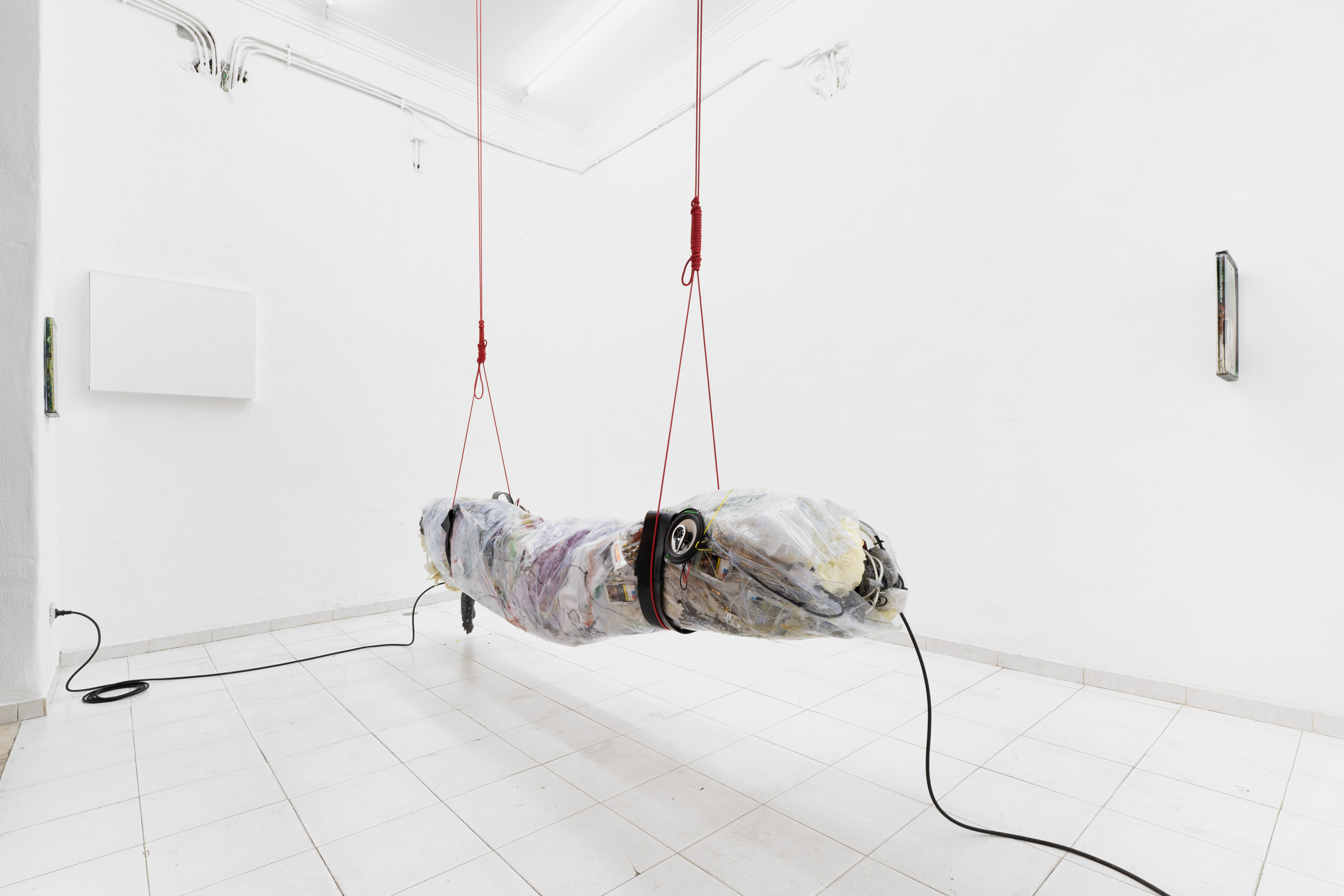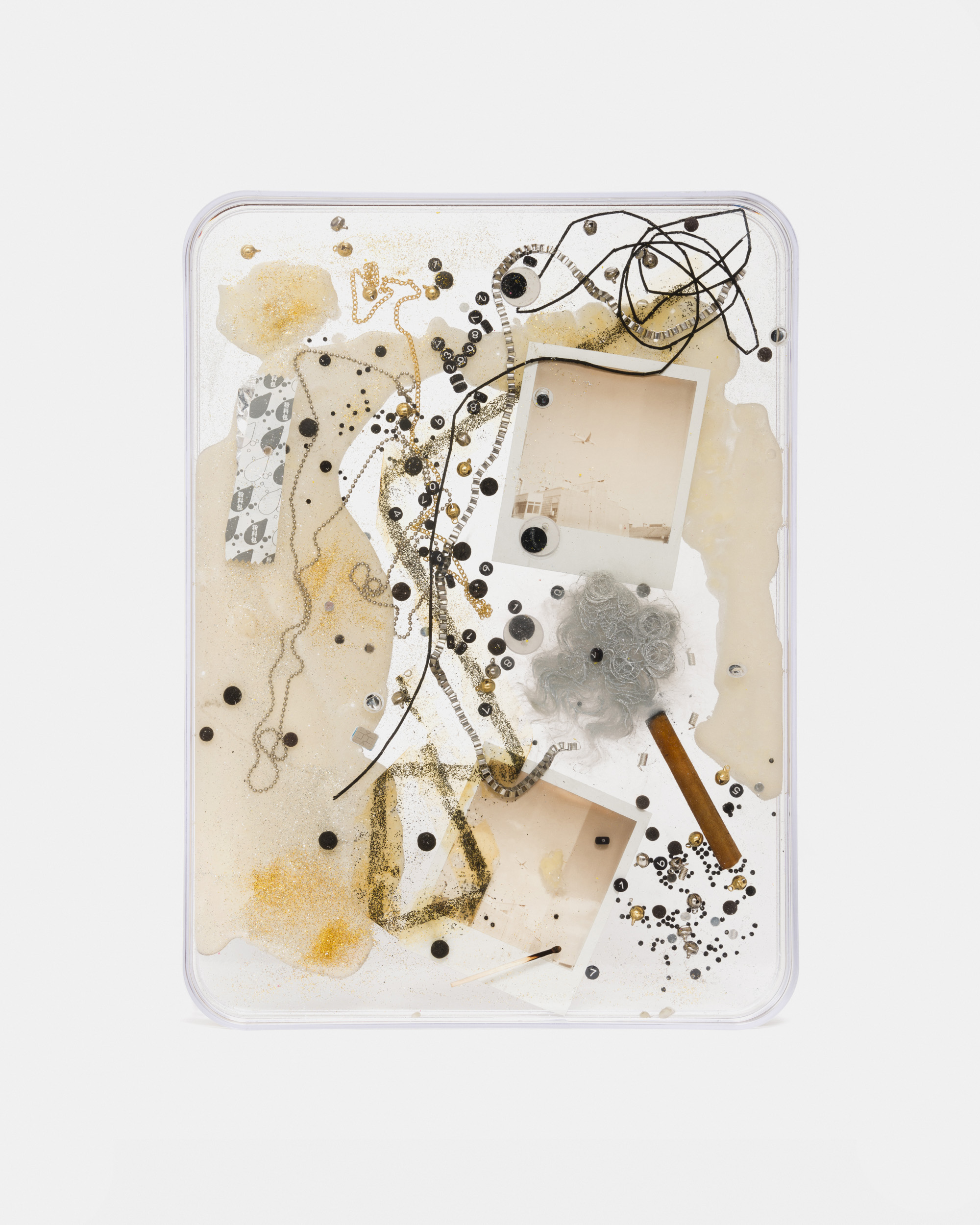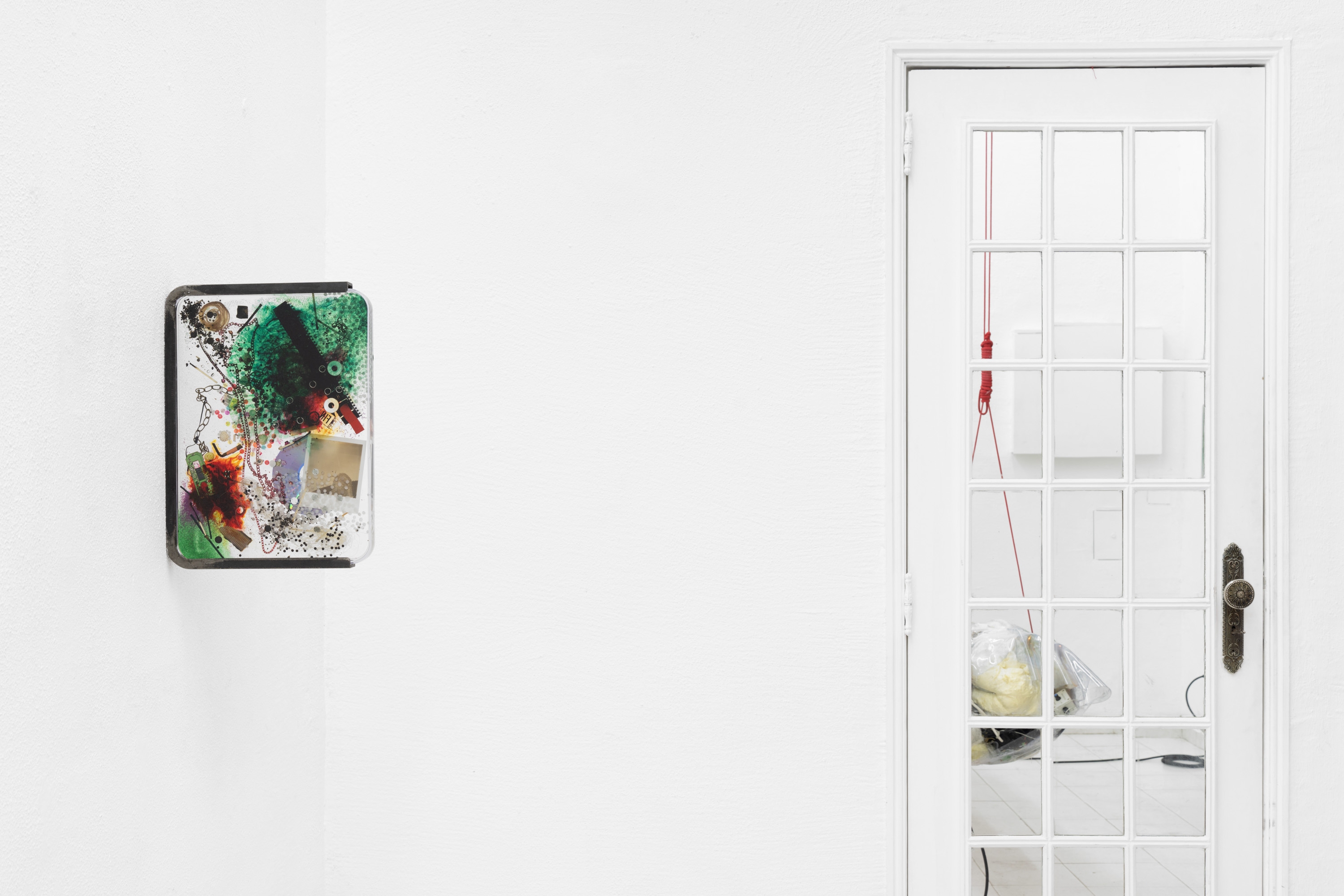Elisa Pône
Bands of Mercy
05.04.2025 - 29.06.2025
Mala is pleased to present Bands of Mercy, Elisa Pône's first solo exhibition at Mala.
Vibrating together
“In the world, everything is vibration, and by using this highly useful knowledge, we can do great good or great harm to humanity.”
These words by feminist writer Maria O’Neill were published in the Portuguese magazine Revista de Espiritismo in 1927. O’Neill, a devoted spiritist and a theosophist, passed away a few years later, in 1934, while returning to Portugal from Brazil, where she had given a series of lectures on spiritism. “Her body was thrown into the sea, the preferred burial place of Hindu mystics, with whom Maria O’Neill had deep spiritual affinities as a disciple of Besant and Blavatsky.”
The story of Maria O’Neill and her engagement with feminism, education, and spiritism in 1920s and 1930s Portugal is one of the threads weaving the texture of Elisa Pône’s exhibition at Mala.
The installation Bands of Mercy (2025), in particular, makes reference, through its title, to the Ligas da Bondade, “an international movement of moral education,” whose principles were “the protection and love of people (regardless of sex, race, or class), animals, plants, and respect for buildings and school materials.” While the Bands of Mercy had existed since the late 19th century in the U.S., the U.K., and France, among others, in Portugal, they were established in 1917. Associated with the feminist organization Conselho Nacional das Mulheres Portuguesas since 1923, as Ligas da bondade were managed by a directing committee presided over by Maria O’Neill.
In Elisa Pône’s Bands of Mercy, an uncanny sculpture hangs low from the gallery’s ceiling. Its massive, oblong form vibrates intermittently, as if the piece had a life of its own. A stratified body, composed of countless layers of discarded objects and heterogeneous textures, it also emits an electronic sound evoking the clicks that sperm whales produce for echolocation and communication in the water.
The complex functioning of this artificial creature, crafted through a time-consuming process of incorporation and layering, reflects the intricate web of histories and stories it holds, making them vibrate together in a material form.
In this sense, the multidimensional language of this work—self-contained yet expanding in space through its sonic projections, compact yet composed of separate pieces—allows the artist to condense a plurality of possibilities and narratives that the one-dimensionality of words is inevitably doomed to reduce.
Maria O’Neill thought that everything vibrates.
Scientific work on energy and vibrations has nourished psychic research since the 19th century. The phenomenon of sympathetic vibration—“a vibration produced in one body by the vibrations of exactly the same period in a neighbouring body”—is particularly intriguing in this context. “The concept of ‘sympathetic vibration’ was […] informed by an understanding of the body as borderless,” observe Anthony Enns and Shelley Trower, “and it explained how energy or expression or communication could be transmitted between and beyond bodies across space and time. This phenomenon clearly illustrates the connections between science and occultism that developed through the Victorian period and into modernism […].” Sympathetic vibrations could be associated, for instance, to telepathic communication or to the psychic activity of mediums. Furthermore, the concept of brain waves, as found in the 19th-century writings of Gustav Fechner, was also linked to vibration—“thoughts are vibrations that emanate from the brain in all directions, just as sounds emanate from a string instrument.”
In her 1927 article titled “Maledicência – Benevolência” [“Slander – Benevolence”], Maria O’Neill mentioned the way in which thoughts “of affect and courage” can be sent to “morally depressed” people as a way to help them. “You cannot imagine the great action of others’ thoughts on our minds, nor the strength they instil in us to accept everything with calmness and resignation.” As for vibrations, thoughts are envisioned here as invisible forces that connect us to one another and, as such, have the power to affect us deeply.
In this sense, although Maria O’Neill began engaging with spiritism in 1924—by which time her work with the Bands of Mercy was already underway—one might imagine that the belief in the interconnectedness of all beings and things, materialized through vibrations, was central to both experiences
Interconnectedness, as Maria O’Neill suggested, can have ambivalent and even contradictory effects—and lead one in expansive, unpredictable directions.
The Bands of Mercy emerged within a historical and cultural context where children’s education was still naturalized as a female activity—an association that many feminist advocating for women’s suffrage during the First Republic did not challenge.
And while the Bands of Mercy’s commandments aimed to foster kindness toward human and non-human life, they also enforced a certain discipline on children. Was docility the price to pay, perhaps, for educating children to become kind-hearted?
By inviting us to vibrate with her work—to be materially and psychically affected by it and to affect it in unforeseeable ways—Elisa Pône’s exhibition also invites us to resonate with the contradictions, incongruities, and uncertainties embedded in the stories, histories, objects, materials, and wor(l)ds that her pieces weave together and radiate all around them.
Sometimes, even when the actions or objects disappear, the radiance is so intense that it lingers—like the traces of a colourful explosion on the windows of an art gallery
Giulia Lamoni, April 2025
Bio
Elisa Pône is a French transdisciplinary artist (b.1979) based in Lisbon, Portugal.
She studied Art History in the University of Nanterre, Visual Arts in National School of Arts of Paris-Cergy and followed the MAUMAUS Independent study program in Lisbon. She is presently studying Sound Phenomena following the theoretical/practical training at World Academy School of Carnaxide.
Exhibitions and performances include: Boca Musgo, with Davide Balula, Figura Avulsa Lisbon, ANDOR!, group show, Póvoa de Varzim (2024 cur. Paula Pinto, Performing the Archive) The Third Nape, solo show at Openspace Nancy (2023 cur. Vincent Verlé), Arder-Havir, with Julien Perez, L’Onde Vélizy Villacoublay (2022 cur. Léo Guy Denarcy ) For The Next Wave That The Next One Erases, solo show at BBB, Toulouse (2021 cur. Marie Bechetoille) Falso Sol, Falsos Olhos, solo show at Quadrum, Lisboa (2020 cur. Estelle Nabeyrat) Cosmo/Política #6, group show at Museu do Neo Realismo, Vila Franca de Xira (2020 cur. Sandra Vieira Jurgens) La mesure du monde, MRAC Sérignan (2019 cur. Sandra Patron) Some of Us, Kunstwerk Carlshötte, Budelsdorf (2019 cur. Marianne Derrien) La nuit de la pleine lune, La Tôlerie, Clermont-Ferrand (2017); Alliance Caustique, L’écho des Spectres, Centre Pompidou, Paris, 12Mail & La Friche la Belle de Mai, Marselha (2015 cur. Géraldine Gomes, Guillaume Sorge, Léo Guy Denarcy)
Elisa Pône is represented by Michel Rein Paris and Bruxelles.
Support:
MaisFRANÇA is the program for contemporary French creation in Portugal. It is supported by the Institut français de Paris and the following patrons: Claude & Sofia Marion Foundation, BNP Paribas, JC Decaux and Mexto.
The artist would like to thank: Sofia Montanha, Henrique Loja, Bruno Bogarim, Beatriz Neves Fernandes, Catarina Bogarim, Vasco Futscher, Giulia Lamoni, Giusi Tinella, Philippe Mouchel, Institut Français, André Gonçalves, Addac System, Isabel Freire, Rita Bernardes Barreira, Marina Soveral, Catarina Lello, Vasco Lello, Rodrigo Dias, Zita Pône Dias.









Photo: Beatriz Pereira / Carbonara Studio, Courtesy of Mala and the artist.
